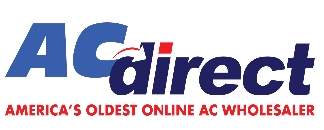Must-Have Models for Reliable Mobile Home Electric Furnace Heating
-
 By
Michael Haines
By
Michael Haines
- Jan 28, 2025

By Mike Haines 1/28 Choosing the right furnace for your home can feel overwhelming. With so many factors—like system capacity, installation guidelines, and specific mobile home requirements—you might wonder how to zero in on the ideal solution. In this post, we’ll shift our focus from traditional downflow and upflow gas furnaces to electric furnaces specifically designed for mobile homes. You’ll see which model suits your mobile home’s size, layout, and budget.
The Difference Between Mobile Home Electric Furnaces
Below, we’ll explore several specific models of Revolv Electric Mobile Home Furnaces available at ACDirect.com. These furnaces come in different capacities, measured in kilowatts (kW). Understanding kW rating is crucial because it directly relates to how much heat a unit can generate:
- Revolv 10 kW Electric Mobile Home Furnace
- Revolv 12 kW Electric Mobile Home Furnace
- Revolv 15 kW Electric Mobile Home Furnace
- Revolv 17 kW Electric Mobile Home Furnace
- Revolv 20 kW Electric Mobile Home Furnace
- Revolv 23 kW Electric Mobile Home Furnace
Key Highlights
1. Revolv 10 kW Electric Mobile Home Furnace
- Best For: Smaller mobile homes or mild climates where less heating output is required.
- Key Features:
- Compact design fits in tight spaces
- Straightforward installation and wiring
- Lower energy consumption due to a smaller heating element
2. Revolv 12 kW Electric Mobile Home Furnace
- Ideal Use Case: Slightly larger mobile homes or those located in moderate climates.
- Key Benefits:
- Provides a step-up in heating capacity over the 10 kW model
- Maintains an energy-efficient profile without overburdening your electrical system
- Easy compatibility with standard mobile home duct layouts
3. Revolv 15 kW Electric Mobile Home Furnace
- Why It Stands Out: A popular “middle-ground” model that balances output and power draw.
- Performance Highlights:
- Adequate for most average-sized mobile homes
- Built-in sequencers to prevent electrical surges
- Reliable performance with safety features designed for HUD-compliant mobile homes
4. Revolv 17 kW Electric Mobile Home Furnace
- Capacity and Coverage: Suitable for larger mobile homes or homes in cooler climates.
- Key Features:
- Sturdy construction for frequent usage
- More robust blower motor for greater airflow
- Designed to maintain stable indoor temperatures during colder months
5. Revolv 19 kW Electric Mobile Home Furnace
- High-Level Efficiency: Offers ample heating power while maintaining efficiency.
- Top Advantages:
- Higher heating capacity for big temperature drops
- Often paired with optional AC coils for year-round climate control
- Compatible with advanced thermostat controls
6. Revolv 20 kW Electric Mobile Home Furnace
- Perfect For: Mobile homes in regions that experience harsh winters.
- Feature Set:
- Heavy-duty heating elements to handle consistent heating demands
- Durable housing and quality components for extended lifespan
- Potentially lower runtime due to higher heat output
7. Revolv 23 kW Electric Mobile Home Furnace
- Maximum Heating Power: The largest of the bunch, suited for very cold climates or larger multi-section mobile homes.
- What Makes It Exceptional:
- Capable of maintaining comfortable temperatures even during extreme cold snaps
- Excellent for homeowners who prioritize rapid heating
- Usually recommended if your mobile home has additional heated spaces (e.g., enclosed porches or expansions)
What Makes a Furnace “Mobile Home” Rated?
Unlike standard furnaces, mobile home furnaces must comply with HUD guidelines. These guidelines govern everything from safety features to installation practices. Electric mobile home furnaces often come with:
- Smaller Footprint: Designed to fit in tighter spaces like closets or utility nooks.
- Sealed Combustion/Design: While this is more common with gas furnaces, electric models also have specialized enclosures to ensure safe operation.
- Compatible Duct Flanges: Tailored to connect seamlessly with under-floor duct systems typically found in mobile homes.
Unlike standard furnaces, mobile home furnaces must comply with HUD (U.S. Department of Housing and Urban Development) guidelines, which govern everything from safety features to installation practices. Electric mobile home furnaces often come with a smaller footprint, making them easier to fit into tight spaces such as closets or utility nooks. While sealed combustion is more commonly associated with gas furnaces, electric models also have specialized enclosures to ensure safe operation. In addition, these furnaces include compatible duct flanges, allowing them to connect seamlessly with the under-floor duct systems typically found in mobile homes.
Ideal Installation Scenarios for Mobile Home Electric Furnaces
- New Installations or Replacements
- Matching the kW rating can simplify installation if you’re replacing an old electric furnace in a single- or double-wide mobile home.
- Upgrading from Gas or Oil
- Transitioning to electric can reduce maintenance needs and eliminate gas lines or venting.
- Supplemental Heat
- Sometimes, homeowners use these units as supplemental heaters alongside mini-split systems in areas with moderate weather.
Whether installing a new system or replacing an old electric furnace in a single- or double-wide mobile home, matching the kW rating can simplify the process. Upgrading from gas or oil to electric can reduce maintenance by eliminating the need for gas lines or venting. Sometimes, homeowners also use these furnaces as supplemental heaters alongside mini-split systems, especially in regions with moderate weather.
Benefits of Electric Furnaces in Mobile Homes
- No Combustion Byproducts: Electric models don’t directly produce carbon monoxide or other exhaust, unlike gas furnaces.
- Lower Maintenance: Pilot lights, flue pipes, and gas lines do not need to be checked regularly.
- Simplicity: Installation is generally more straightforward, requiring an adequate electrical supply, proper duct connections, and adherence to HUD guidelines.
- Cost-Effective for Mild Climates: If you live in a milder region, the total operating cost can be manageable, especially with a well-insulated mobile home.
One of the main advantages of electric furnaces is the absence of combustion byproducts; since there’s no burning of fuel, these units don’t produce carbon monoxide or other exhaust gases. They generally require less maintenance, eliminating the need for regular checks of pilot lights, flue pipes, or gas lines. Installation is also more straightforward, involving only an adequate electrical supply, proper duct connections, and adherence to HUD guidelines. Finally, for those in milder climates, an electric furnace can be cost-effective if the mobile home is well-insulated and the heater does not run excessively.
Key Differences to Consider
- Heating Capacity (kW)
- Higher kW = more heating output. Choose a model that aligns with your climate zone and home size.
- Power Requirements
- Electric furnaces require specific voltage and amperage. Check whether your mobile home’s electrical system can handle the load.
- Space Constraints
- Measure your current furnace area and compare it to the product dimensions. Some models are more compact than others.
- Budget & Operating Costs
- While electric furnaces can be more efficient to run in mild climates, consider both upfront costs and long-term electricity expenses.
When choosing an electric furnace for your mobile home, heating capacity (kW) is critical: higher kW provides more heating output and is better suited for colder climates or larger mobile homes. You must also ensure that your mobile home’s electrical system can handle the required voltage and amperage. Space constraints come into play as well—always measure the area where the furnace will be installed and compare it to the product dimensions. Lastly, keep an eye on both initial and long-term costs: while electric furnaces can be efficient in mild climates, electricity expenses may add up if you require extended heating.
Choosing the Right Furnace for Your Mobile Home
- Evaluate Your Mobile Home’s Size and Layout
- Single-wide units might require less capacity, while double-wide or triple-wide homes often need 17 kW or more.
- Consider Your Local Climate
- If you’re in a colder region, aim for at least 17 kW or higher to ensure adequate heating.
- Check HUD and Local Regulations
- Different states and localities may have specific codes regarding mobile home HVAC installations. Always confirm compliance.
- Consult an HVAC Professional
- Before purchasing, it’s wise to speak with a licensed technician to assess ductwork, insulation, and electrical capacity.
- Budget for Efficiency
- Higher kW models can quickly warm your home but may draw more power. Weigh the pros and cons based on your typical weather conditions and how long you’ll run the heat each season.
Begin by evaluating your mobile home’s size and layout. Single-wide units typically require less capacity, whereas double- or triple-wide homes might need 17 kW or more to maintain comfortable temperatures.
Aim for a furnace with at least 17 kW of heating power if you're in a colder region. It’s equally important to check HUD and local regulations, as different areas may have specific requirements for mobile home HVAC systems. Before you commit to a particular model, consult an HVAC professional to assess your ductwork, insulation, and electrical capacity. Lastly, consider efficiency in your budget. While higher kW models heat quickly, they may draw more power, so weigh your typical weather conditions and heating habits to strike the right balance.
Installation and Maintenance Considerations
- Proper Sizing
- Oversized units may cycle too quickly, causing wear and potential hot-cold swings. Undersized units struggle to maintain comfortable temperatures.
- Electrical Requirements
- Verify your breaker panel and wiring can handle the chosen furnace’s amp draw.
- Routine Maintenance
- Change or clean air filters regularly to maintain airflow.
- Inspect heating elements and blower assemblies annually.
- Schedule professional check-ups to ensure long-term, safe operation.
- Duct Sealing
- Mobile homes often have ducts running underneath the floor. Ensure all seams are well-sealed to prevent heat loss and improve efficiency.
Final Thoughts
When choosing an electric furnace for your mobile home, kW capacity and HUD compliance are the two most critical factors. Whether you opt for the entry-level 10 kW Revolv for a smaller home or the powerful 23 kW model for larger dwellings in cold climates, selecting the right unit ensures you stay warm and comfortable year-round.
If you’re still unsure which capacity to pick, give us a call. We can provide personalized guidance by assessing your home’s square footage, insulation levels, and electrical infrastructure. Ready to upgrade your mobile home’s heating system? Get Revolv Electric Mobile Home Furnaces and more at ACDirect.com. With the right furnace, you’ll enjoy efficient, safe heating tailor-made for your mobile home’s unique needs.

 and now, NASCAR Racing Sponsor
and now, NASCAR Racing Sponsor










